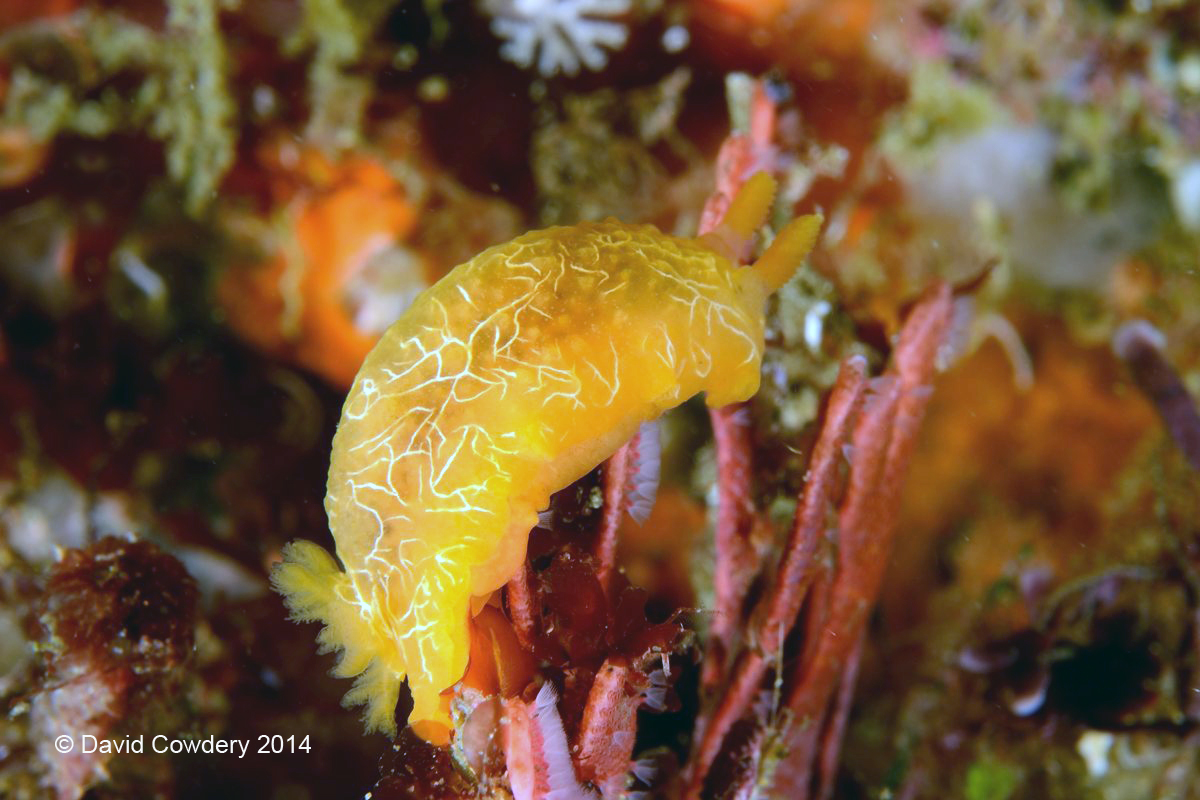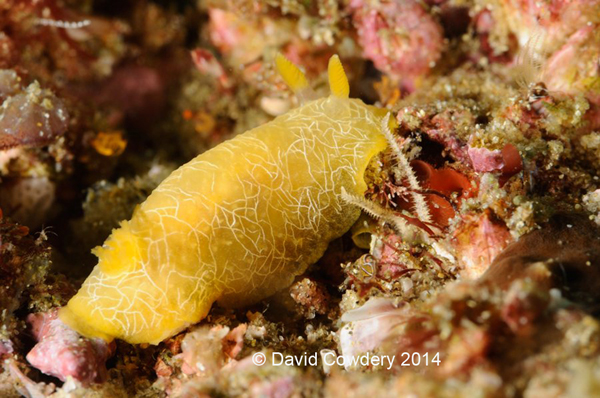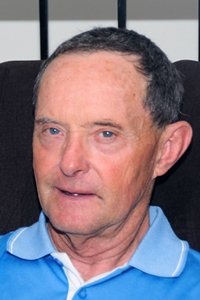 |
Doriopsilla miniata
Image courtesy of David CowderyPhoto taken at Julian Rocks Marine Park in Byron Bay Australia
Doriopsilla miniata photographed by David Cowdery at Byron Bay, Australia
 |
Doriopsilla miniata (Alder & Hancock, 1864)
Ever wonder how Joshua Alder and Albany Hancock discovered and described so many species of nudibranchs from all over the world and they didn't even dive. They must have used dredges. That doesn't seem fair. Well, Doriopsilla miniata is one of the hundreds of species this productive team has named. Like many sponge slurping porostome nudibranchs found around the world it is yellow in color, which can vary from light yellow to dark orange. The distinguishing characteristic of this species is the pattern of white lines on the dorsum. Like other porostomes, it lacks a radular for rasping away at the sponges they feed on and must spit a mouth full of acidic digestive fluid onto the sponge to soften it, then slurps up the resulting sponge soup. Found in the southern Indo-West Pacific it is mimicked by the gastropod, Trivia millardi, for protection. David Cowdery, the photographer reports that D. miniata is seen on Pleurotoichus clathratus the favoured home of Okenia atkinsonrum. Dave indicates this correlation could be happenstance, but who knows? Recently Jessica Goodheart and Angel Valdes have shown that specimens of D. miniata from South Africa belong to the closely related sister species Doriosilla areolata from the Atlantic. Using phylogenetic and population genetics tools they were able to determine that D. miniata from South Africa is identical to D. areolata by molecular data. |
Rumor has it there will be a big shake up with the California yellow porostomes very soon. Can't wait to hear more.
Reference:
Goodheart, J. & Valdes, A. 2013. Re-evaluation of the Doriopsilla areolata Bergh, 1880 (Mollusca: Opisthobranchia) subspecies complex in the eastern Atlantic Ocean and its relationship to South African Doriopsilla miniata (Alder & Hancock, 1864) based on molecular data. Mar Bio Diversity 43:113-120.
MERRY CHRISTMAS AND HAPPY HOLIDAYS
Sammamish, WA 98074
Dec., 2014
Send Dave email at davidwbehrens@gmail.com
David Cowdery

Dave Cowdery is a retired biomedical engineer and Divemaster at Byron Bay Australia. He has over 5000 logged dives. He is a keen participant in trips organised by Graham Abbott at Diving4Images and has dived the tropics extensively from Cocos Keeling Islands east to Niue. 3 Camera equipment used Nikon D300 in Ikelite Housing with twin 125 substrobes and a 60mm Nikon macro lens. Dave has additional observations on our subject for this week Okenia atkinsonorum feeds on the bryozoan Pleurotoichus clathratus at Port Stephens (just north of Sydney Australia. The images in Colemans encyclopedia show this behaviour clearly and is also reported by Rudman. At Byron Bay (Australia's most easterly point and several hundred miles further north from Port Stephens). The behaviour is similar but the animals are sometimes seen on the red seaweed Delisea pulchra. This is usually at a depth of 8-10 meters.
Send Dave mail at divec@ozemail.com.au
|

|
